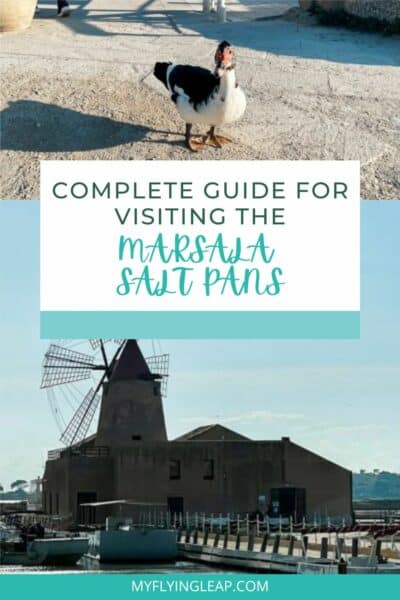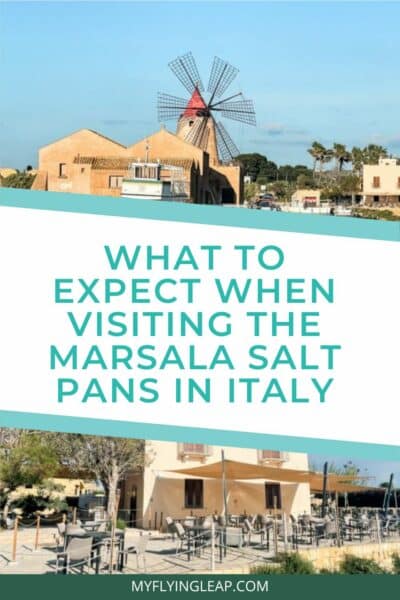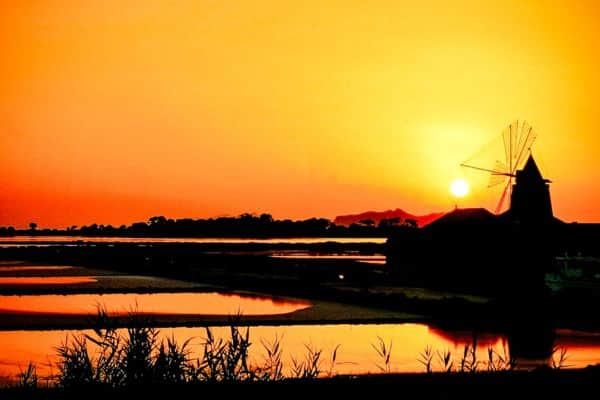Marsala Salt Pans—Why You Should Visit & What to Expect
Are you considering a visit to the Marsala salt pans? Read on for everything you need to know before you go!
The Marsala salt pans are one of the most interesting and unique places to visit in western Sicily. In fact, I’d go as far as to say that visiting western Sicily isn’t complete without going there.
Not only do you learn about the extensive history of salt farming in the area, but it’s a beautiful landscape to take in during sunset. And it’s one of the most important wetlands in the world.
Here’s why you’ll want to add the Marsala (or Trapani!) salt pans to your travel list, including everything you need to visit.
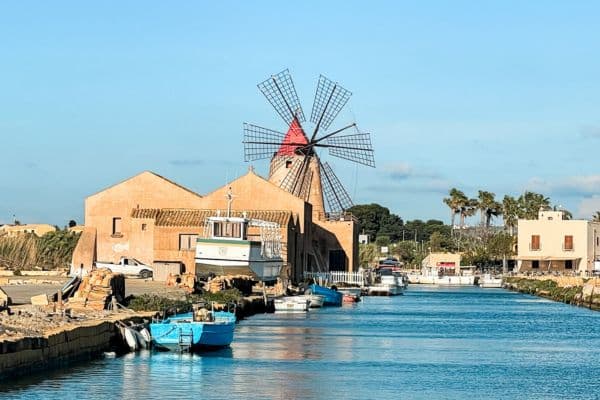
This post may contain affiliate links, which means I’ll receive a commission if you purchase through my links at no extra cost to you. Please read the full disclosure for more information.
What is a Salt Pan?
Before we dive into visiting this incredible area, let’s first review what a salt pan is. Salt pans, or salt flats, are areas of ground covered with salt and other minerals.
They form by the evaporation of water, where evaporation exceeds precipitation. This process leaves behind salt.
Salt pans can be natural. Or they can be artificial, created by man for the purpose of salt cultivation as these were.
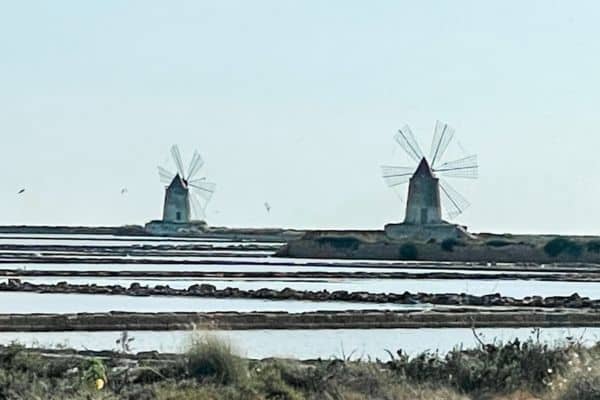
History of the Marsala and Trapani Salt Pans
The history of the salt pans in western Sicily dates back to the Phoenicians, around 2700 years ago. The production of “white gold” has been important in this area, and throughout Europe, for many centuries.
Between the 13th and 17th centuries, there was an economic boom here while Sicily was under Spanish rule. At the time, there were 42 different salt pans operating.
Salt was important to people as it was used for food preservation before ice was widely available. Salt was called “white gold” due to its importance. In fact, the word salary is derived from salt.
Salt production has been carried out here since that time, though it’s more of a niche market here. Sicilian salt is known for its flavor and quality. It is known to contain more magnesium and potassium than many other salts produced around the world.
Windmills were added to the salt production process in the area around the 15th century. There are private saltpans and public, and they are used for various things besides eating, like salt scrubs and the like.
Since 1996, the World Wildlife Fund (WWF) has protected around 1,000 hectares of land in this area. Not only is the landscape rich with history and tradition, but it offers shelter to migratory birds.
Visiting the Marsala Salt Pans (Saline di Marsala)
Tours to the salt pans are educational in nature. You learn about salt production in the area, including history, volume, and process.
It’s not just for learning, though. If you go on a tour (and even if you don’t), it’s a good idea to take the small ferry to the Stagnone Islands, where you’ll also learn about the history of the area.
There are also some gorgeous views of the islands and the salt pans, especially at sunset. The water is shallow, and the sun’s fading light reflects beautifully on the pools you’ll see.
As you approach, you’ll start to be able to smell salt in the air. Interestingly, we pulled a blade of grass near the pools and it tasted very salty.
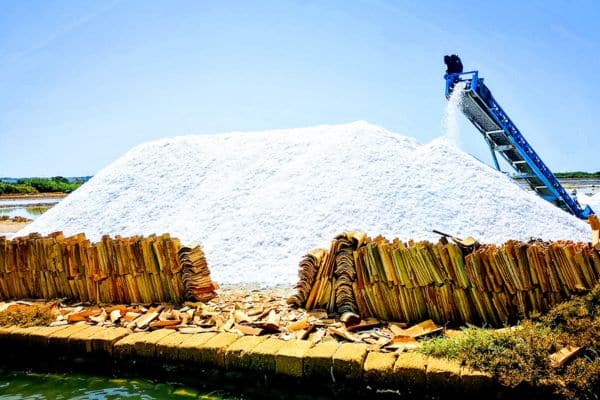
Photo credit: Allessio, Trapani Emotions
Salt Production in the Marsala and Trapani Salt Pans
Though salt production has decreased from its peak, there are still between 100k and 150k tons of salt produced in this area every year. It’s successful in this area due to its low tides and the hot, sunny summers.
Salt collected by hand maintains the minerals, so it’s the best for the body. If machines are used, the salt must be washed and therefore loses some minerals that make it the healthiest for the body. Salt is made both ways, so it’s good for food and the body.
Salt production begins by allowing water through the channels to the salt pans. Those closest to the water are a blue-green color. You’ll then see them turn different shades, including pink and white, with beautiful salt remaining.
Windmills once pumped the water through the channels and the pools. They remain today for nostalgia as much as anything. It’s now done with industrial pumps.
Want to go on the guided tour we did? Our guide, Allessio, was incredible, and we highly recommend it!
Salt Harvesting
Salt harvesting frons from March to October/November. In March, water is removed from the salt pans. Then, the basin is cleaned, and the material is pressed and filtered. This helps to extract the microorganisms occurring naturally from the clay.
The pans are dried for two weeks. Salt is gathered in late August, and in September, workers use conveyor belts to pile the salt on the side of the salt pans, covering them with terracotta tiles to keep them dry from the rain. It remains there for 8 to 10 months until fully dry.
Special training is required to do this work. The salt cannot be touched, or it can’t be used. It’s also hard and needs special tools to break it up to collect it by hand. Though most salt is made by machine, most here is made by hand (over 70%).
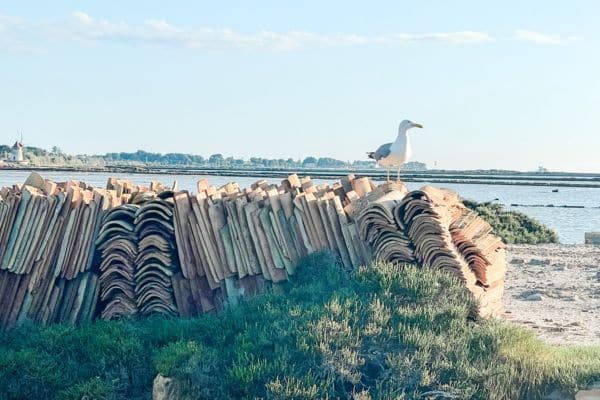
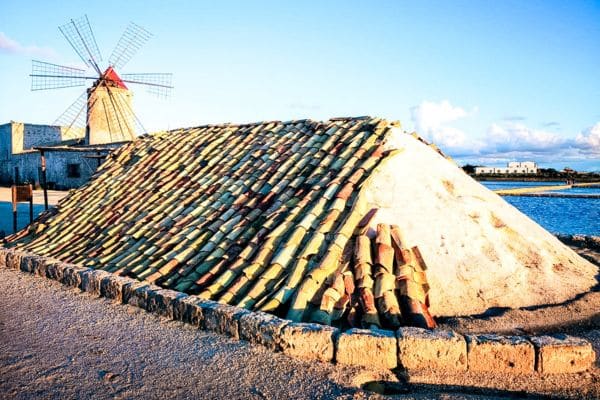
The tiles are rounded as they used to be made by hand over someone’s legs. You’ll see variety in the shape/size as a result. Photo credit: Allessio, Trapani Emotions (image on the right)
Mothia & the Stagnone Islands
Visiting the Stagnone Nature Reserve, and the Stagnone Islands, is a must when in this area. You can take a small boat to the islands, and Mothia (also called Mozia) is a highlight.
It was populated in 1182 by locals and taken by the Phoenicians around 800 BC. At its height, over 12,000 lived on the island. There is a ruin on the island’s south side, and you can see evidence in inhabitants all around it.
Around 1800 years ago, a road went to the island across the lagoon. The water is so shallow that you can see it now under the water.
It’s possible to get off to visit the island, filled with ruins created many years ago. You can see them from the water as well. If you go on a tour, you’ll likely not make this stop. Only one person lives there now (with his two dogs) to care for the island.
Stagnone Lagoon is the largest in all of Italy. It has a shallow seabed, making it a perfect location for salt production. This area is the primary location of traditional salt-making, which makes it a popular tourist spot.
From the center of the lagoon, you can see all four islands.
In the distance, you’ll often see hundreds of kitesurfers. The weather conditions and shallow waters make it the perfect spot.
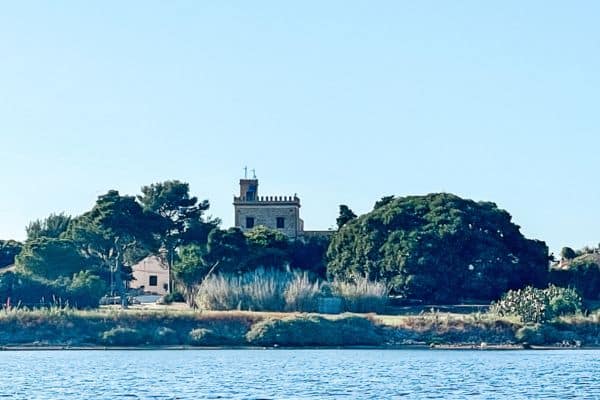
On the boat tour, you’ll learn about salt production and the people who once lived on the island of Mothia. It’s an interesting listen and a lovely view.
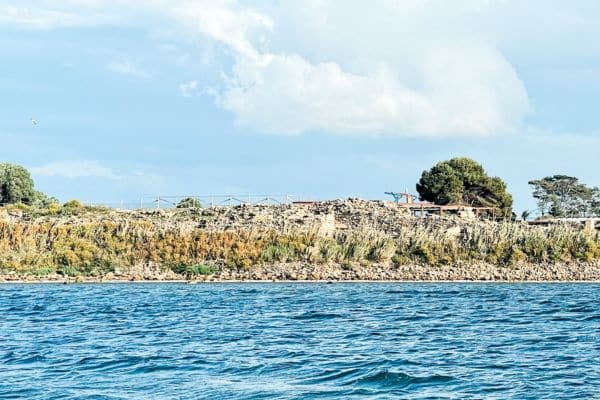
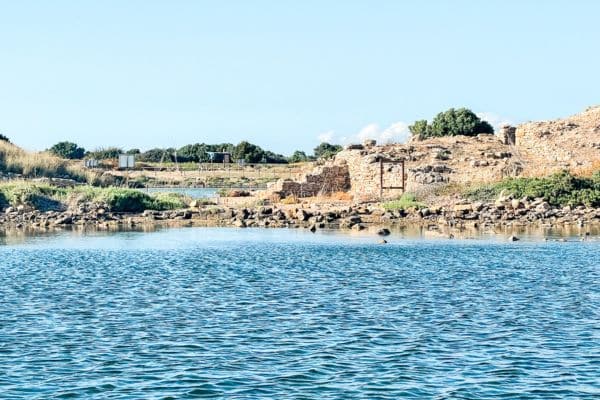
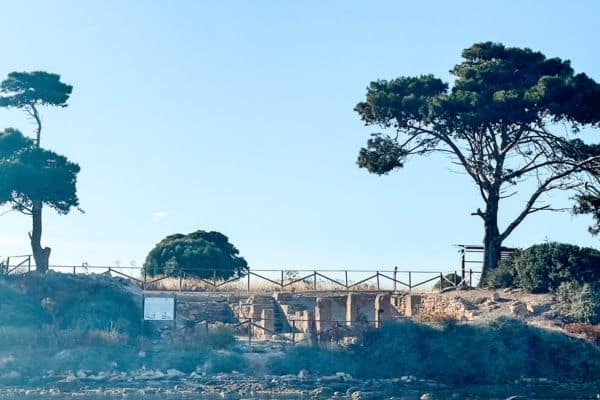
Other Reasons to See the Marsala Salt Pans
Pink Flamingoes
When you visit the salt pans of Marsala, you may get lucky and see the white and pink flamingos. They are a symbol of the salt pans and migrate here due to the natural humidity they provide.
The pink flamingos get their color from the local shrimp in the area that they eat, which are pink. They fly from France and stop here in the spring and winter.
There are 229 kinds of birds found in this area. It’s an important spot for bird migration in Europe.
Chocolate Tasting
A small shop, Oro Bianco, is across the street from the ticket building for the boats to Mothia. There’s an interesting mix of items inside at reasonable prices if you’re looking for something to take home to remind you of your visit.
Of course, you’ll find salt in bags of all sizes. They also have some really interesting flavored salts. It’s worth taking home some salt to try it. And they have food, gelato, and other things there in case you’re hungry.
The salt has a different taste from many, and it’s quite good. It also seems to have a higher liquid content, so I find it gets hard and a bit clumpy when left out (easily remedied by chipping at it.)
They also have different chocolates with salt, and you can ask to do a wine and chocolate tasting. You get to try three different kinds of local Marsala wines with chocolate.
The chocolates pair very well with wine, and it’s fun to see which combination you enjoy the most. And of course, you can leave with some chocolate and wine if you’d like!
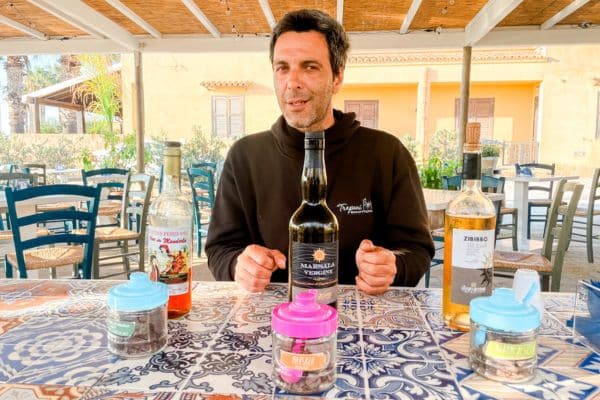
Our guide, Allessio
Sunset at the Marsala Salt Flats
Most tours to the salt pans are in the later afternoon for a very good reason—catching the sunset over them is simply glorious!
It’s such a beautiful view of the sun setting and the lights shining on the different pools as the light fades. As interesting as the tour and learning about salt production is, this is one of the highlights!
If you end your day at the souvenir shop, and I recommend you do, climb up to the upper level to enjoy the sunset. There is a rope blocking the stairs, but if you’re discreet and quiet, you likely won’t have any issues. We didn’t.
And this area is an incredible viewpoint for the explosion of color you’re about to enjoy.
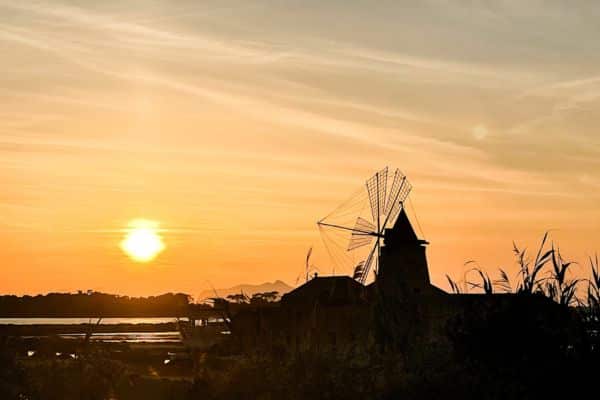
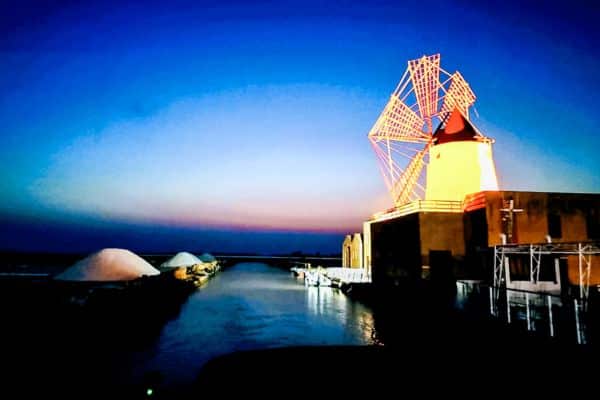
Salt Pans a sunset, Photo credit: Allessio, Trapani Emotions (photo on the right)
How to Get to the Marsala Salt Pans
The salt pans run between Trapani and Marsala along the western coast of Sicily. You can easily drive to the area on provincial road SP21.
If you drive from Trapani, you’ll see areas of private salt pans and some public ones. The area toured are the Marsala salt pans further south and only a few miles north of Marsala.
This is one of those spots where I definitely recommend taking a tour. It’s so interesting to learn more about the area! And it’s an easy way to visit from Trapani.
Where to Eat at the Salt Pans
There is a small cafe right at the dock where you can pick up the boat to visit Mothia Island. You can get a lovely view of the salt pans from here at sunset.
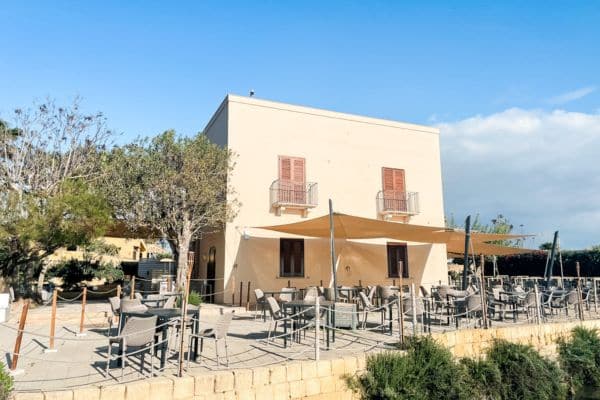
This cute little guy decided he was the unofficial greeter! Apparently, he’s been staying there for over a year and a half, and he’ll come right up to you to say hi!
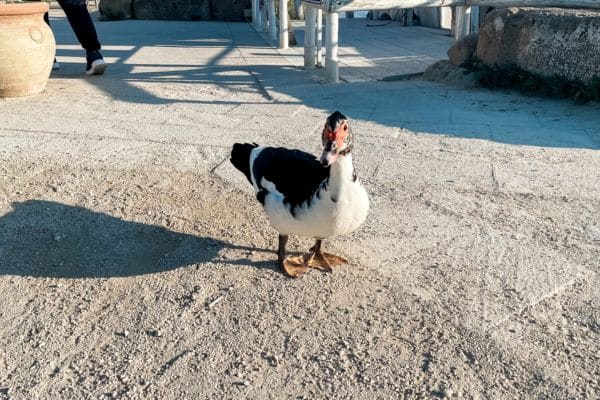
Salt Pans Windmill Shop
It’s worth taking a short while to explore this small shop located in one of the windmills on the salt pans. There are some interesting things to look at here, including some artifacts.
There is a small gift shop, but you’ll find the prices are much higher for items than at the tourist shop across the street. Absolutely look as it has some interesting items there and some fun and beautiful artwork.
Ticket Office for Mothia Boat Tours
The ticket office is right near the windmill before you walk onto the dock. You can get a boat tour around the Mothia settlement with a round-trip ticket.
If you take a tour, they will likely get this for you as it’s often provided with the tour.
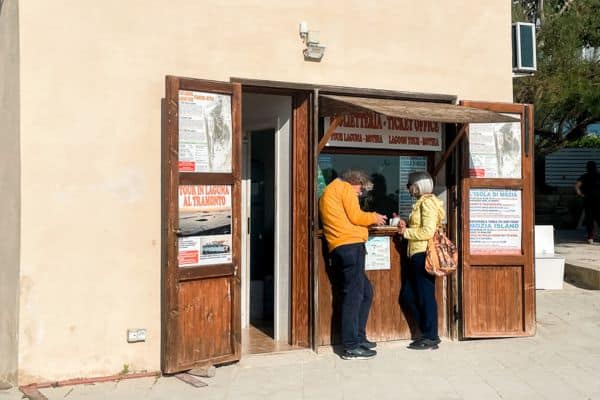
Have You Added the Marsala Salt Pans to Your Wish List?
Maybe it’s me, but I’ve always been fascinated by the cultivation of salt. Especially since I visited the salt pans in Peru.
Salt is on most tables, and it’s an everyday staple, but we don’t often think about the work to produce it. And the cultivation of salt in the Trapani area goes back thousands of years.
It’s worth mentioning that there is a Salt Cathedral in Realmonte, near the city of Agrigento on the southern coast of Sicily. I visited a Salt Cathedral in Zipaquira, Colombia, and it was so interesting! If you visit, let me know what you think!
You Might Also Like
- What to Expect at Gypset Yoga Retreat Italy—a Detailed Review
- 11 of the Best Things to do in Capri for a Perfect Day
- What to See When You Visit Pompeii Archaeological Park
- Why You Should Visit the Herculaneum Ruins + Top Tips
- Rome in a Weekend—How to See All of the Top Sites
- 3 Best Umbria Towns to Visit—Gubbio, Perugia, and Assissi, Italy
- Visit the Vatican—A How to Guide for Visiting Vatican City
- Naples National Archaeological Museum—Why It’s a Must-See + Visit Tips
- Trastevere in Rome—What to See + Top Trastevere Restaurants
- Top Things to Do in Sorrento & Reasons to Stay There
- Segesta Archaeological Park—All You Need to Visit the Segesta Ruins in Sicily
- Selinunte Archaeological Park—Visit the Selinunte Greek Ruins in Sicily
Like it? Pin it!

